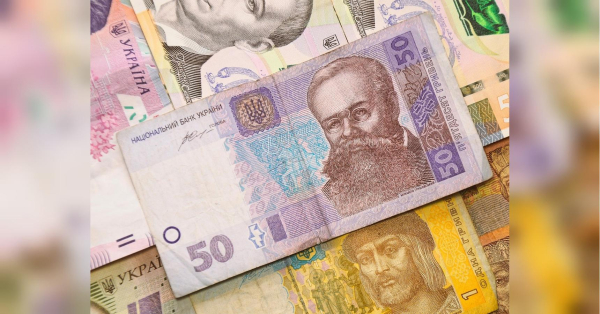Unlike Somalia the failed state next door, it avoided U.S. intervention, outside assistance, and foreign loans.

Street market Hargeisa, Somaliland, in 2016.
( By Clay Gilliland/Flickr)
|
Michael Horton
The United States has been involved in Somalia’s wars for 26 years—half a century if U.S. support for former dictator Siad Barre is included. What has America achieved with the billions of dollars spent arming and supporting various factions in the country over decades? Very little.
Somalia’s government consistently ranks as the most corrupt in the world and only exerts consistent control over parts of the capital, Mogadishu. Despite years of intensive military aid and the presence of hundreds of U.S. soldiers and thousands of African Union Mission in Somalia (AMISOM) troops, much of the country is controlled by al-Shabaab, an al-Qaeda-linked terrorist group, and other armed factions.
Travel outside Mogadishu’s fortified “green zone” by most foreigners and Somali officials requires heavily guarded convoys. Travel outside the capital is often impossible regardless of how well armed the convoy is. Even inside the green zone, indeed within Villa Somalia, the presidential palace, al-Shabaab has its eyes and ears on government officials and their movements. Again and again, al-Shabaab mounts attacks against even the most heavily defended facilities. Most recently, it used a suicide bomber to kill the well-guarded mayor of Mogadishu.
Notwithstanding this lack of success, the United States is increasing its military presence in Somalia and its aid to the world’s most corrupt government. More of everything that has produced little or nothing is the favored U.S. response in Somalia, as it is in many other parts of the world. This is because American foreign policy, no matter which party occupies the White House, ignores the intervention trap.
Armed interventions rarely achieve their aims, even when those aims are clearly defined. They instead generate numerous unforeseen and unintended consequences—almost always negative. More soldiers and resources are usually needed to deal with the unintended consequences in addition to whatever prompted the intervention in the first place.
At this point, the trap is sprung and the intervention becomes self-sustaining. This is immensely profitable for the hundreds of companies that provide services, contractors, and weaponry to the U.S. government. It is not so good for the U.S. soldiers asked to fight and die, the taxpayers who fund it all, and those unfortunate enough to live in one of the countries subject to U.S. interference.
There are few better examples of how pernicious this intervention trap can be than Somalia. Conversely, there are few better examples of a country making its own way than the as-yet-unrecognized Republic of Somaliland. Somaliland, the northernmost part of Somalia, declared its independence in 1991 following years of war with dictator Siad Barre. The former British protectorate was briefly independent in 1960 before it joined what was Italian Somalia to form the state of Somalia. In contrast with Somalia, Somaliland has not been subject to an international intervention; it has been largely left alone to develop as its citizens have seen fit. The results are striking when compared with the systemic corruption and instability that plague Somalia.
Since 1991, Somalilanders have drafted a constitution, formed a government of their own making, and held parliamentary and presidential elections. At the same time, they have kept al-Shabaab and other militant groups from establishing footholds in their territory. The last major al-Shabaab attack in Somaliland was in 2008. Hargeisa, a city of almost a million people, is probably the safest capital in Africa. Even petty crime in Hargeisa is rare. While there are pockets of instability in the eastern and border areas of Somaliland, most of the country is secure and under the control of the elected government.
Somalilanders have achieved this stability in a rough neighborhood with little outside assistance and no foreign loans. No international advisers told them how they should structure their government, security services, or military. Instead, they developed these institutions in ways that best suited their particular needs and sociocultural contexts. These needs and contexts only they fully understand. And that is likely why the institutions they have developed work as well as they do.
This is a point government officials and citizens emphasized over and over again to this author during a recent visit to Somaliland. In a wide-ranging conversation, the president, Muse Bihi Abdi, underscored the importance of Somaliland’s indigenous approach to governance. “We are doing things by ourselves, for ourselves, and in our own way,” Bihi explained. “We did not have a system of government imposed on us, we developed our own, a process that is still underway.”
Somalia, unlike Somaliland, has seen the United States, other countries, the United Nations, and NGOs intervening, aiding, and advising for decades. One of Somaliland’s chief intelligence officials said the situation might be different without that long history of interference.
“It was the intervention in Somalia by Ethiopia and the U.S. in 2006 and then by other nations that helped energize al-Shabaab,” the long-serving intelligence official argued. “When the Islamic Courts Union took over from the warlords in 2006 in Mogadishu and other parts of Somalia, the people welcomed them. While the leaders of the ICU were conservative Muslims, they weren’t militants like al-Shabaab. The takeover by the ICU was far from ideal, but it was better than being ruled over by corrupt and homicidal warlords. Instead of understanding this, of understanding the politics of Somalia, the Ethiopians, with U.S. support, invaded Somalia because they believed the ICU were militants. They weren’t, but the invasion helped create what they thought they were fighting: al-Shabaab.”
In short, Americans and Ethiopians walked into the intervention trap and, in so doing, gave terrorists, in this case the nascent al-Shabaab, what they needed most: foreign enemies to fight. After the Ethiopian-led invasion of Somalia in June 2006, al-Shabaab grew exponentially until its forces controlled large swaths of Somalia and even parts of the capital. It was only in 2011, with the deployment of nearly 10,000 AMISOM troops supported by the United States, that al-Shabaab was forced to retreat from its bases in and around Mogadishu.
Despite billions of dollars in humanitarian and military assistance, much of it provided by U.S. taxpayers, and the continued presence of 20,000 AMISOM troops, al-Shabaab is again resurgent. Al-Shabaab, much like Yemen-based al-Qaeda in the Arabian Peninsula, with which it collaborates, is always learning and evolving. Rather than openly hold territory in areas vulnerable to attack, al-Shabaab has developed a kind of shadow state that is far harder to target. This shadow state functions better and is less corrupt and generally more efficient than the federal government it seeks to overthrow. In fact, al-Shabaab has replaced the government in many parts of the country. It has its own ministries and it collects taxes, distributes aid, and runs a highly capable intelligence service, the Amniyat.
“There is little al-Shabaab does not know,” a Mogadishu-based security analyst said. “Al-Shabaab has its informers, spies, and sympathizers in every government ministry and even in the National Intelligence and Security Agency.”
NISA is Somalia’s preeminent intelligence service. It receives both funding and training from the United States. However, as a senior official with Somaliland’s National Intelligence Service pointed out, “al-Shabaab has long targeted NISA, and I estimate that well over 70 percent of those working for NISA also have contact with al-Shabaab.”
Why is al-Shabaab so successful and resilient in Somalia while it has struggled to gain traction in Somaliland? There are a number of factors. Somaliland, unlike Somalia, is home to fewer clans. It also inherited a very different colonial legacy from the British than Somalia did from the Italians.
These are, however, only contributing factors. The main reason Somaliland has been able to fight off al-Shabaab is that it has a government of its own making that retains the trust of a majority of its citizens. Somaliland’s president was a military officer and attaché in the Barre regime. Bihi broke with Barre when he became ever more oppressive and joined the Somali National Movement, which fought to overthrow the dictator and was instrumental in securing Somaliland’s independence.
Bihi explained how fundamental this confidence is to stability and to combating militant groups such as al-Shabaab: “I’ve been an officer in a regular army and in our liberation army, and while there are many differences, one thing remains the same: trust between you and your people is what allows you to succeed. If you don’t have the hearts and minds, as it is often called, you don’t have anything. And in Somalia, the government does not enjoy this trust.”
The Federal Government of Somalia, unlike the government in Somaliland, is a product of intervention and largely sustained by international aid. “The aid is like heroin,” a senior adviser to the African Union said. “Once a country, a government, and its officials are hooked on it, it is very hard to get them off. The aid often does more harm than good in a country with weak institutional structures like Somalia.”
In 2009 and 2010, $7 out of every $10 received by the government of Somalia was unaccounted for, according to a leaked U.N. report. The Somali Ministry of Finance recently could not account for $42 million in missing funds. A not-inconsiderable amount of the money given by donor nations likely makes its way to al-Shabaab.
“Al-Shabaab collects what it calls taxes from even ranking members of the government,” a security analyst based in Ethiopia said. “The officials, some of whom are genuine sympathizers, know that they either pay up or face the consequences. Al-Shabaab is very good at getting its cut, and it knows exactly where the money is going and what it is to be used for. They employ numerous accountants, and theft is punishable by death. So there isn’t a great deal of corruption—at least at a low level.”
The United States has not stepped back and reevaluated its policies in the wake of these problems. Instead, the Trump administration is set to deepen U.S. involvement in Somalia while failing, along with much of the international community, to acknowledge the gains made by Somaliland and its people. Somaliland has over the last three decades developed the kinds of institutions that can benefit from intelligently delivered assistance, yet little is offered and no loans can be granted to a state that is not recognized.
The examples of Somalia and Somaliland offer sobering lessons on the limits and dangers of armed intervention. They also point to the acute need for countries to develop institutions that meet their own particular requirements, not those stipulated by foreign advisers, before billions of dollars in aid are distributed.
Michael Horton is a foreign policy analyst who has written for numerous publications, including The National Interest, West Point CTC Sentinel, The Economist, and the Christian Science Monitor.
Sourse: theamericanconservative.com






